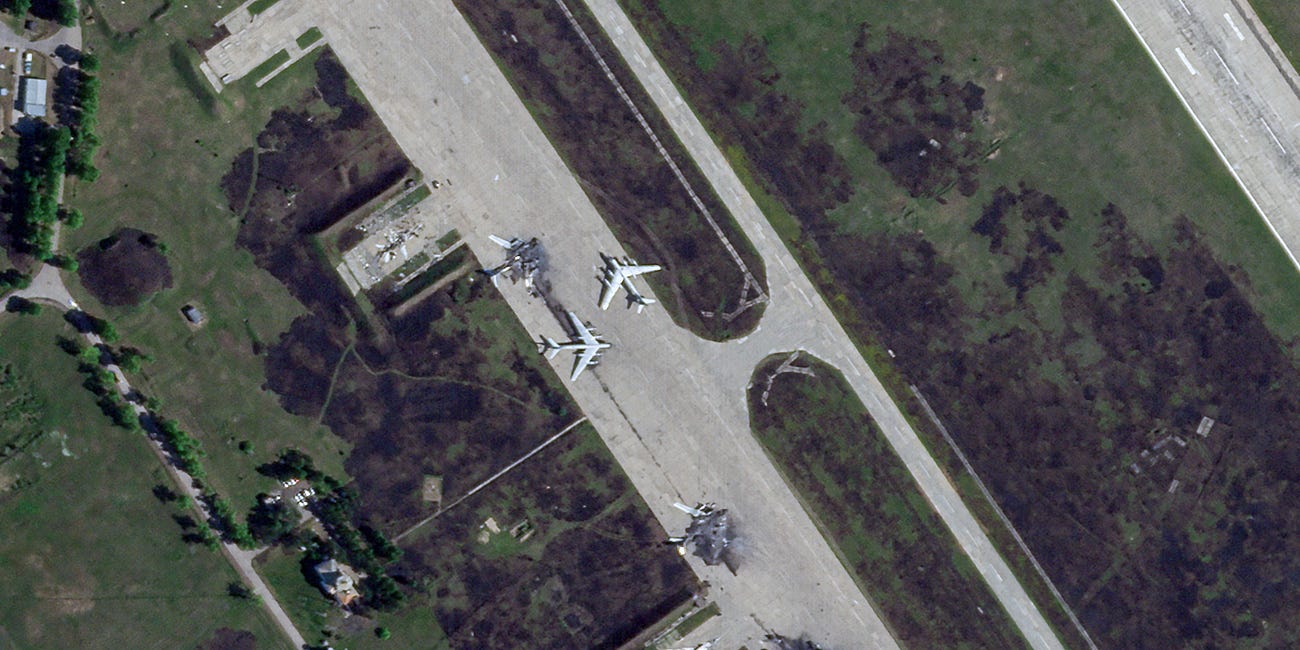Why Russia's Giant Tu-160 Bombers Finally Joined the Air War on Ukraine
The swing-wing Tu-160s are filling in for destroyed Tu-95s
Prior to mid-June, there was scant evidence the Russian air force’s 16 Tupolev Tu-160 heavy bombers—four-jet, supersonic monsters weighing up to 300 tons—played any significant role in Russia’s wider war on Ukraine.
Then, near midnight on the night of June 6, two Tu-160s took off from Belaya air base—2,700 miles from the Russia-Ukraine border—and winged west. Over the Caspian Sea, they opened their bomb bay doors and loosed Kh-101 cruise missiles.
Five propeller-driven Tupolev Tu-95s joined in. Altogether, the seven bombers flung 36 of the 5,300-pound Kh-101s at Ukrainian cities.
It was the first confirmed Tu-160 raid in the 41 bloody months since Russia widened its war on Ukraine.
And not for no reason. Five days earlier, the Ukrainian state security agency—the vaunted SBU—had smuggled more than 100 small explosive drones across Russia and struck four air bases including Belaya, destroying as many as eight Tu-95s plus four Tupolev Tu-22M bombers, a Beriev A-50 radar plane and an airlifter.
The 50 or so Tu-95s in the Russian inventory before the SBU’s June 1 Operation Spider Web had flown most of the sorties targeting Ukrainian cities. And not all the Tu-95s—rather, the 10 or dozen of the lumbering, 207-ton bombers the Kremlin had recently modernized and overhauled. For their part, the Tu-22Ms seem to have run out of their main Kh-32 missiles.
Tu-160s fill in
In destroying as many as eight Tu-95s, the SBU hobbled the Russian air force’s active stand-off deep-strike capability. While 440-pound Shahed attack drones dominate the Russians’ roughly twice-a-week attacks on Ukrainian cities, the approximately 500-munition raids still mix and match weapons in order to complicate Ukrainian air defense. Cruise missiles still matter.
With the likely long-term depletion of the Tu-95 fleet—recall, the type is long out of production—the Tu-160s, which are nominally in production at a rate of one every two years thanks to old stored components, took over. After that initial sortie on June 9, the swing-wing giants (alone or in pairs) joined in further attacks on Ukraine on June 17, possibly on July 12 and also on July 28.
For complex, expensive-to-operate bombers that are propelled by delicate NK-32 engines that last just 2,000 hours or so between overhauls—and which are hand-built by a single dysfunctional and impoverished factory—the missile raids on Ukraine are a heavy lift. The Tu-160 fleet’s main task, before June, was to sustain a pair of nuclear-armed bombers on constant alert.
In deploying Tu-160s for attacks on Ukraine, the Russian air force risks undermining the nuclear alert—and heaping wear and tear on its priciest and most fragile bombers. But it’s clear the Kremlin is determined to continue bombarding Ukrainian cities, whatever the cost.
And it’s equally determined to mitigate the risk from SBU operations … by relocating surviving bombers to the air bases farthest from Ukraine. In the weeks since Operation Spider Web, the Russian air force has carefully redeployed virtually all of the remaining Tu-95s to Ukrainka air base in Russia’s Far East, 3,700 miles from the border.
The Tu-160s seem to be congregating at Yelizovo air base, in the Far East 3,500 miles from the border.
Read more:
Ukraine's Smuggled Drone Raid May Have Knocked Out an 8th Tu-95 Bomber
We know for sure that Ukraine’s June 1 drone raid targeting five Russian air bases destroyed seven Tupolev Tu-95 bombers, four Tupolev Tu-22M bombers, a Beriev A-50 radar plane and a transport plane.




